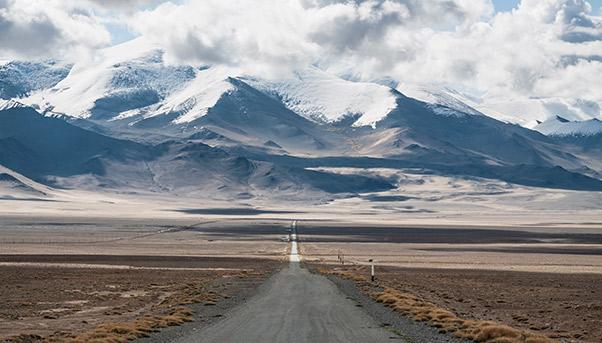The Vakhsh River surges down from the mountains, cutting Tajikistan in two. Its waters are cold and strong, swollen by the melting snows of the Pamirs, the biggest mountain chain of Central Asia with peaks that surpass 7,000 metres above sea level. An incredible geography with an enormous hydroelectric potential, a force of nature that, if harnessed, would contribute to the social and economic development of the country.
This is one of the key projects of the energy programme of the Tajikistan government, which is banking a lot on the construction of the tallest dam in the world at a height of 335 metres, a gigantic rockfill structure with a clay core whose day has finally arrived after a past of repeated delays.
Rogun Dam: the Project
The Rogun HPP (Hydropower Project), a $3.9 billion endeavour that will last 13 years, will be done by Salini Impregilo, which signed with OJSC “Rogun HPP” (the state-controlled company coordinating the project) an agreement following an international public tender. It will begin with Lot 2 (signed on July 1 for $1.95 billion) that concerns the construction of the main dam, which foresees the diversion of the Vakhsh River by having it converge into two tunnels to keep the dam’s foundation dry. It will be a complex job that will only be done in winter, when the mountain snows help reduce the strength of the river’s waters.
The construction of the Rogun dam
Although it will take years to complete the project, the idea is to have two of the six turbines start producing energy for sale by 2018 to raise funding to complete it.
The first turbine is to go into service in August 2018, followed by the second one in October of the same year.

This is a solution that is technically called early generation, meaning putting into operation part of the project while construction continues. This early generation becomes the first step in a long process that, once completed, will bring to life one of the biggest hydroelectric plants in Central Asia with an installed capacity of 3,600 megawatts (MW) equal to three nuclear power plants.
The impact of the Rogun dam on Tajikistan
The economic impact will be enormous because Rogun will double the energy potential of Tajikistan, with a direct effect on several fronts: from agriculture to energy supply to international trade. Many neighboring countries from Afghanistan and Pakistan, have already announced the future purchase of electricity produced by the dam and in recent weeks modernization of the grid has started between Tajikistan and Pakistan to facilitate the export of electricity.
In a country with eight million inhabitants and where only 7% of the land is arable, the efficient use of water can become an opportunity to favor growth in agriculture in addition to reducing power outages that every winter oblige thousands of families to risk remaining without light or heating.
The example to follow, in this case, is Ethiopia (it is not a coincidence that emissaries of the Tajik government visited in recent months the dams being built by Salini Impregilo in the African country) where the exploitation of water has been a boon for the economy.
The agreement reached with Salini Impregilo, which should be completed by Sept. 30, 2016 with the three remaining lots, foresees the state making a big investment with the early generation system financing a part along with the participation of international players, both multilateral and private.
What lies ahead is still a long and complex road but work is ready to start and the dream of the tallest dam is finally to become a reality.

